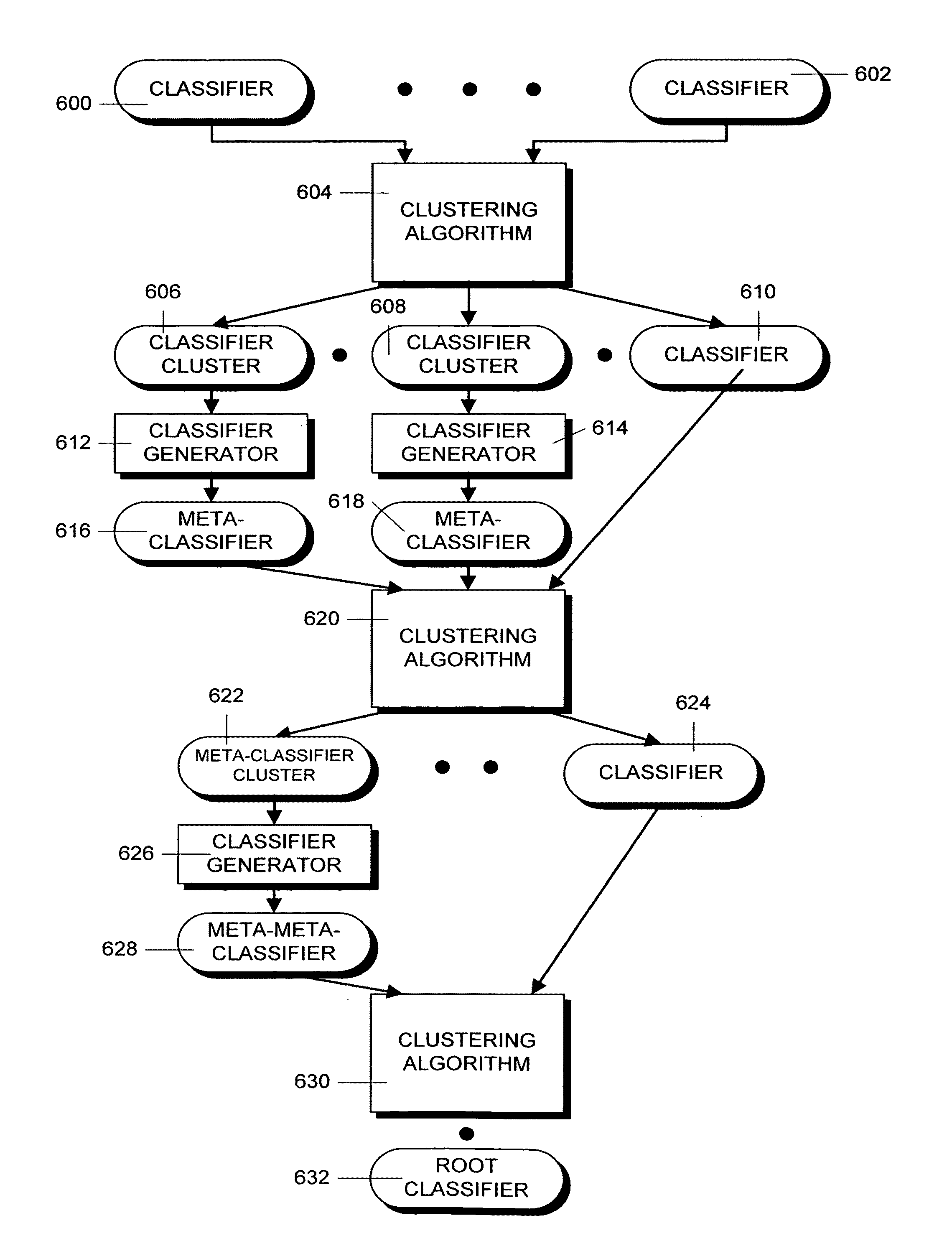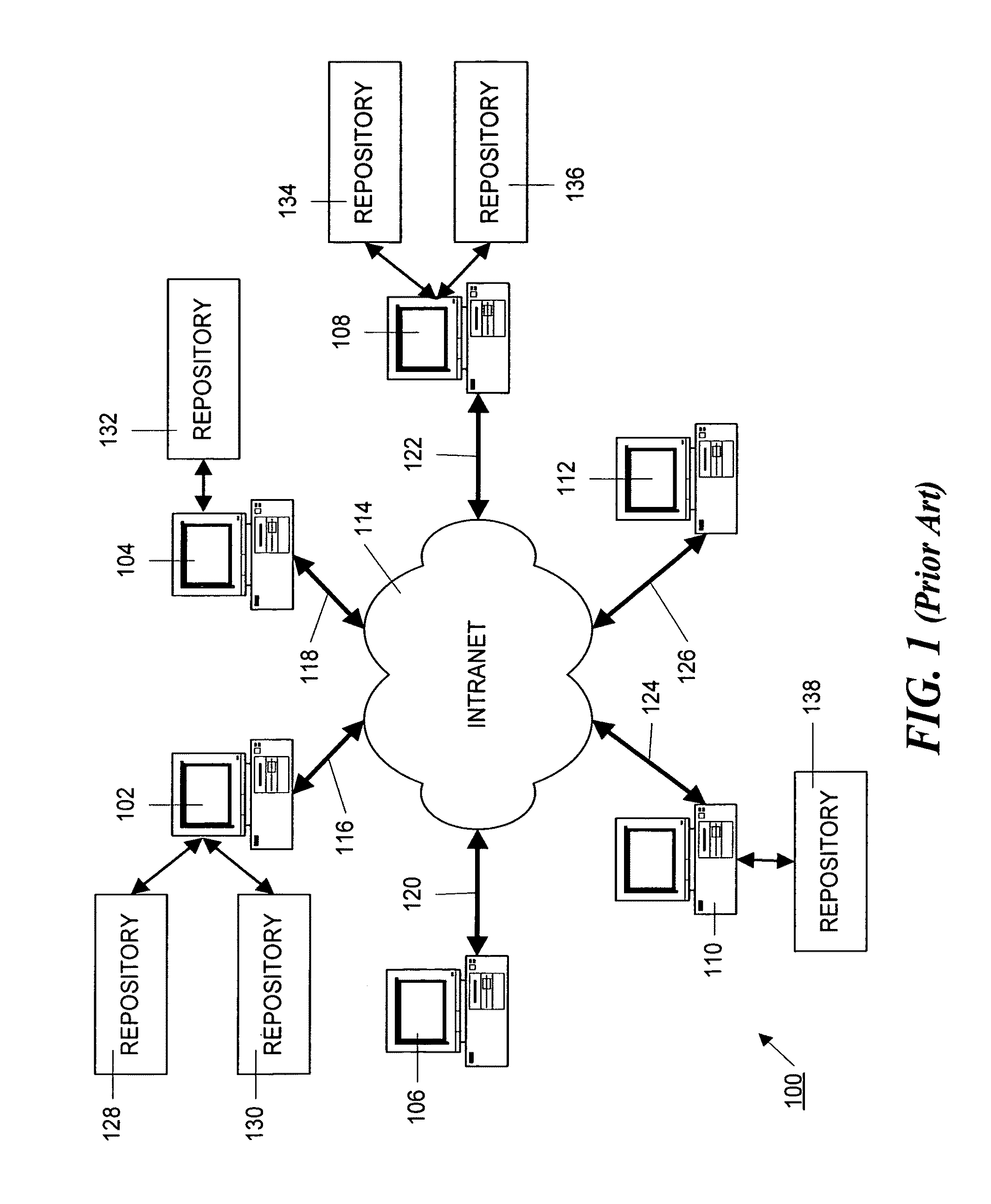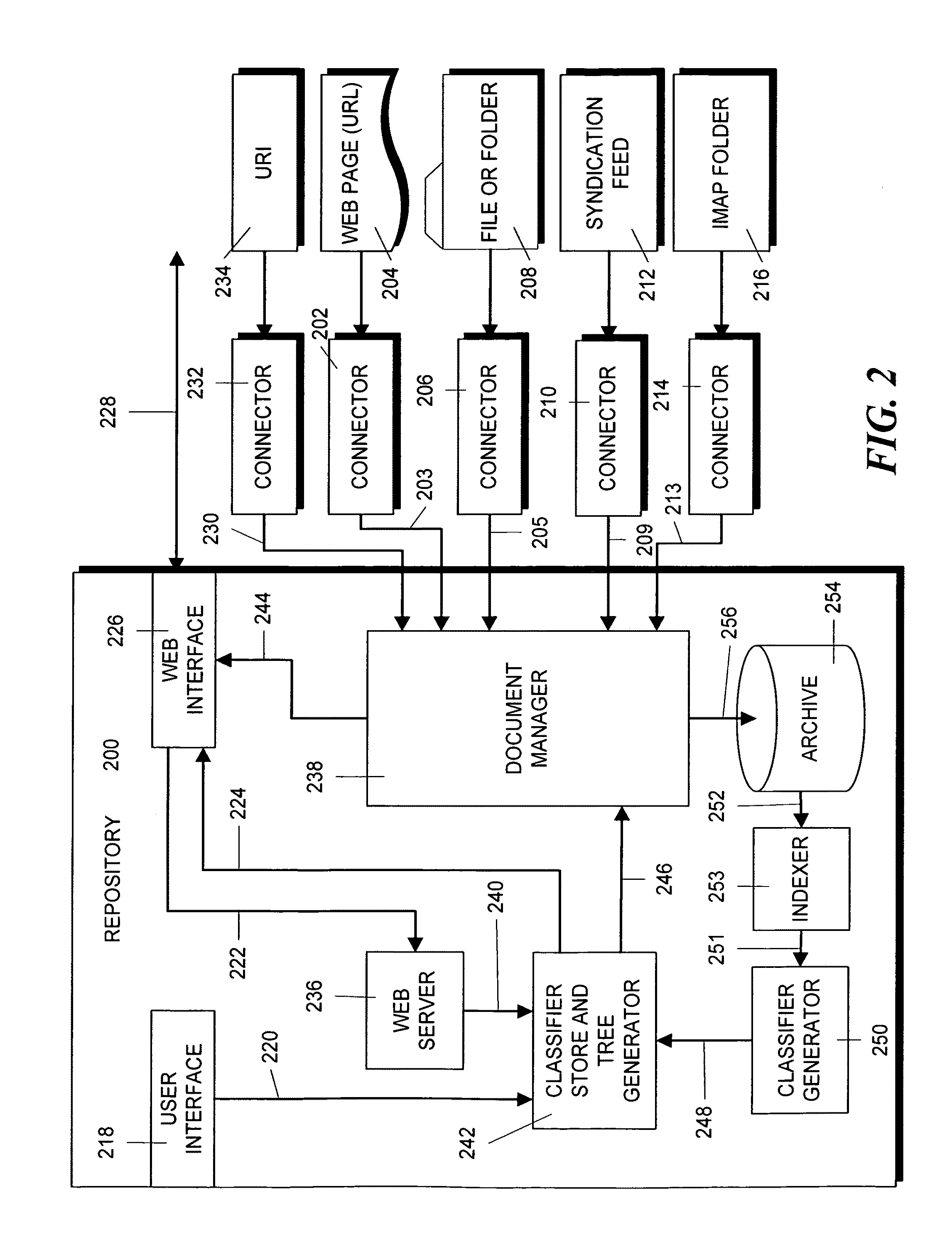Method and apparatus for searching and resource discovery in a distributed enterprise system
a distributed enterprise system and resource search technology, applied in the field of resource search and discovery systems, can solve the problems of inability to easily tell whether a particular document is content of the index in the ess can quickly become out-of-date with respect to the actual documents available on the system, and searchers' frustration
- Summary
- Abstract
- Description
- Claims
- Application Information
AI Technical Summary
Benefits of technology
Problems solved by technology
Method used
Image
Examples
Embodiment Construction
FIG. 1 shows a conventional enterprise computer system 100 that includes computers 102-112 connected together by an intranet 114 as schematically illustrated by arrows 116-126. In the enterprise system 100, resource repositories are personal to each user. For example, resource repositories 128 and 130 are associated with users working on computer 102. Similarly, resource repository 132 is associated with a user operating on computer 104. Resource repositories 134 and 136 are associated with users working on computer 108 and resource repository 138 is associated with a user operating on computer 110. In accordance with the principles of the invention, each repository is assigned a Uniform Resource Identifier (URI) to identify that repository for communication, as described below, with other repositories.
Each of repositories 128-138 can retrieve, store and index resources. A more detailed block diagram of a typical repository 200 is shown in FIG. 2. Other repositories in the system wo...
PUM
 Login to View More
Login to View More Abstract
Description
Claims
Application Information
 Login to View More
Login to View More - R&D
- Intellectual Property
- Life Sciences
- Materials
- Tech Scout
- Unparalleled Data Quality
- Higher Quality Content
- 60% Fewer Hallucinations
Browse by: Latest US Patents, China's latest patents, Technical Efficacy Thesaurus, Application Domain, Technology Topic, Popular Technical Reports.
© 2025 PatSnap. All rights reserved.Legal|Privacy policy|Modern Slavery Act Transparency Statement|Sitemap|About US| Contact US: help@patsnap.com



